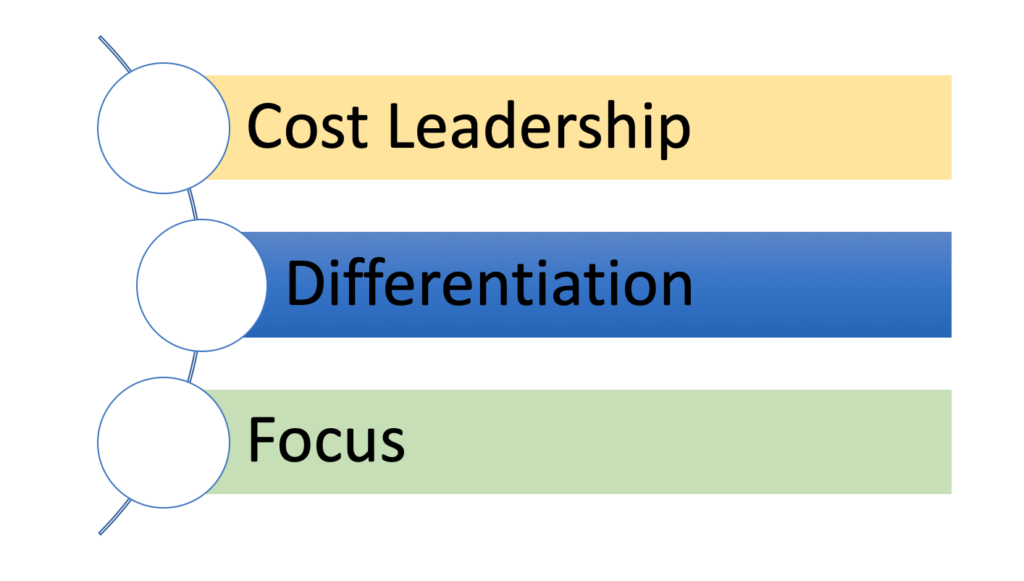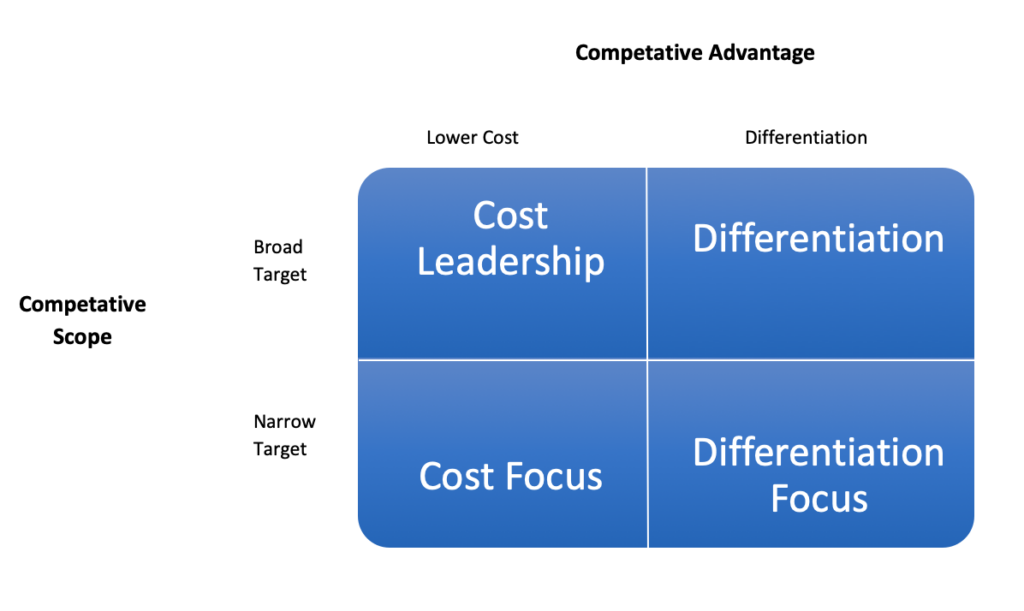Today we’ll be asking what are the three basic business strategies that you can utilize to make your organization competitive.
We’ll be asking
- What is a business strategy
- What are the three basic business strategies
- What are the benefits of a business strategy
What is a business strategy
A business strategy refers to the actions and choices that an organization utilizes to achieve its goals.
The strategy may have several goals including
- Competitiveness
- Market share
- Revenues
- Productivity
- Efficiency
Usually, the strategy is documented as an organizational manual or statement so that:
- It can be communicated to the organization
- Progress can be assessed
- It can be reviewed, ensuring it is fit for purpose and updated as required.
What are the three basic business strategies?
The concept of three basic strategies was originally outlined by Michael Porter (an academic and strategy expert who wrote several books including Competitive Strategy: Techniques for Analyzing Industries and Competitors)
Porter described three strategies that businesses utilize to remain competitive and gain an advantage within the market.
These are:
- Cost Leadership
- Differentiation
- Focus (segregated into Cost Focus and Differentiation Focus)

These strategies can apply in all industries irrespective of product or service.
Let’s look at these in a little more detail.
Strategy one – Cost Leadership
Porters strategy defined “Cost Leadership” as a method of achieving competitiveness through either:
- Reducing costs, maintaining industry prices, thereby increasing profits.
- Gaining market share by charging lower prices (as a result of lower operating costs).
The principle behind this strategy is utilizing cost as a lever.
This strategy does not infer that pricing to the customer is affected.
Cost Leadership is a highly competitive strategy and relies on the organization practicing it to be the number one position.
This typically requires:
- Investment that drives efficiencies that reduce cost
- Highly Effective business processes
- A cost base that is both low and sustainable
Cost Leadership can be a high-risk strategy as it does not rely on unique attributes.
Theoretically, any organization with access to the key enablers can participate.
This leaves a participating organization at risk and open to competition.
Examples of Cost Leadership –
- Low Cost Airlines,
- Budget supermarkets.
Strategy two – Differentiation
The second strategy is differentiation, this utilizes a strategy of presenting products or services that are different from others in the market.
Differentiation can be achieved through
- Branding
- Different features from similar products in the market place
- Different functionality from similar products in the market place
- Different durability from similar products in the market place.
- Different aftercare from others in the market place
Differentiation requires upfront investment by the organization to:
- assess the market and offerings from competitors
- Have highly effective design and innovation processes
- Have effective market presence/awareness
Examples of Differentiation strategy:
- Food focusing on healthy ingredients
- Mobile phones focussing on features not found in competitors products
Strategy 3 – Focus
A Focus strategy targets a specific niche, gaining targeted insight on key enablers and customers.
Once a niche has been selected, the organization then develops products that:
- Focus on low cost (Cost Focus) or
- Products with specific features (Differentiation Focus)
There are several benefits to this approach. Not least is that in a smaller niche market, organizations can focus on delighting customers and building (and retaining) loyalty. This makes market segments less attractive and harder to enter for competitors.
Example Focus strategies:
- Sports cars
- Rolex Watches
What are the benefits of a business strategy
Above, we’ve covered the three basic business strategies, but what are the benefits of having a strategy in the first place?
There are several benefits:
- It provides a clear view of what the business considers the key drivers are which deliver competitive advantage
- It provides a way for leadership to achieve consensus
- It provides clear direction for how capital is used
- It enables the operational element of the business to become aligned with goals
- It provides a method for describing the role of each employee can take in helping to achieve goals

Summary
In this article, we’ve answered what are the three basic business strategies? Each comes with specific attributes, strengths, and weaknesses.
Having an appropriate strategy is vital in developing a viable business proposition. Get it right, and your market position will flourish; get it wrong, however, and you could find your organization struggling.
What success has your organization had in developing its strategy? Which of the three types has it selected? We’d love to hear from you in the comments section or via twitter.
This article is part of our Management & Leadership guide.